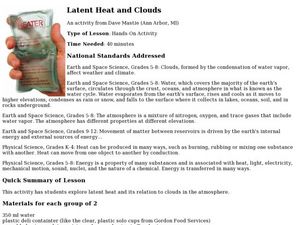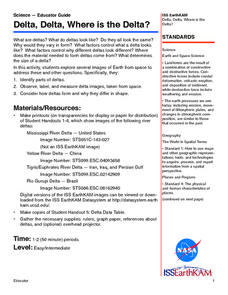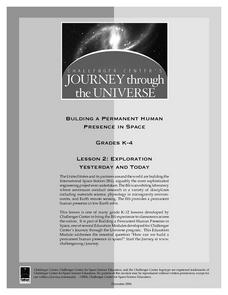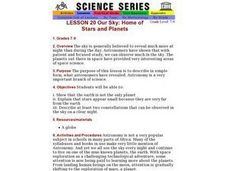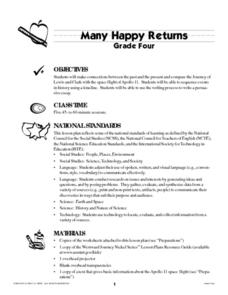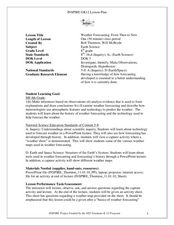Curated OER
Moon Crash
In this moon crash worksheet, students research information about the moon. In a given scenario, students decide which emergency supplies to take in order to survive on the moon.
Curated OER
Magnetic Fields and Bermuda Triangles
Students map magnetic fields of a magnet using a compass and predict where fields cancel each other to create 'Bermuda Triangles'. In this magnetism lesson, students use a compass to map the magnetic field of a magnet. They explain how...
Curated OER
Meteor Showers
Students use the Internet to discover the wonderful world of comets and meteor showers. They discover how to spot one and predict them using a calendar. They also examine the makeup of meteoroids and meteorites.
Curated OER
Modeling the Solar System with Celestia
Students conceptualize the solar system and the objects within it. In this solar system lesson students create a presentation of their themes and objects then present it to the class.
Curated OER
Latent Heat and Clouds
Learners explore latent heat and how it relates to clouds in the atmosphere. In this earth science lesson students investigate how clouds are formed. Learners examine clouds and the water cycle.
Curated OER
Delta, Delta, Where is the Delta?
Students explore several images of Earth from space. They identify parts of deltas. They observe, label, and measure delta images, taken from space. They consider how deltas form and why they differ in shape.
Curated OER
Exploration Yesterday and Today
Learners compare and contrast the voyages of early explorers with the space explorations of the present day. After reading the biographies of Benjamin Banneker and Timothy Livengood, students create a Venn Diagram comparing and...
Curated OER
Our Sky: Home of Stars and Planets
Students discover that astronomy is a branch of science that includes the study of planets, stars, and constellations.
Curated OER
The Water Cycle
Seventh graders discover how water circulates through the earth and its atmosphere while determine how much of the Earth's water is suitable for drinking. They discover the meaning of evaporation, transpiration, and precipitation and...
Curated OER
Hero Or Zero?
Students investigate science and technology by reading a children's book. In this reading comprehension instructional activity, students read the story Archibald Frisby and discuss the ways we use science and technology in everyday...
Curated OER
Many Happy Returns
Students compare the journey of Lewis and Clark with the space flight of Apollo 11. Students sequence events using a timeline. Students write a persuasive essay trying to persuade the people of the US to support space exploration.
Curated OER
Heat Up the Floating Plates
Eighth graders research the connection between the convection currents within the mantle of the earth and the moving of Earth's plates. A connection to lessons at previous grade levels on the rock cycle and important background...
Curated OER
Outdoor Observation
Second graders explore Earth science by participating in a nature observation activity. For this four seasons lesson, 2nd graders identify the four seasons on Earth and the weather patterns they are known for. Students read several books...
Curated OER
Weather Forecasting: From Then to Now
Eighth graders review the history of weather forecasting. In this earth science lesson, 8th graders identify the different tools used in forecasting weather. They explain why it's important to know the weather.
Curated OER
What's Your Favorite Season?
Students explore earth science by creating illustrations in class. In this four seasons lesson, students identify the four different types of weather that take place during the year and read the books Harvest Year and Snow Comes to the...
Curated OER
The Water Cycle
Second graders use the program HyperStudio to draw and describe the water cycle. In this science and technology instructional activity, 2nd graders will first become familiar with the water cycle by exploring books and websites in the...






